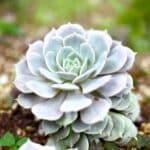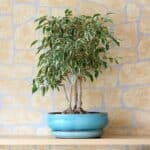The Pearls and Jade Pothos can help purify the air with a trailing, vine-like habit and attractive heart-shaped leaves.
The plant is a high tolerance variety that can thrive in low light and humidity conditions and can withstand neglect for long periods.
Also known as “money plant,” Pearls and Jade Pothos is the ideal houseplant for beginners and people with a busy schedule. The plant requires no particular expertise in its planting and care, as it can thrive in bright sun and partially shaded locations.
However, it's best to avoid the scorching heat of the direct afternoon sun. It can be grown in soil, jars, or water-filled bottles too.
Here is a detailed pearl and jade pothos care guide that will help you ensure the beautiful and healthy growth of the plant.
Table of Contents
What are Pearls and Jade Pothos?
Botanically called Epipremnum Aureum originated from Mo'orea and came from the Araceae family; the Pearl and Jade Pothos is a sport of the variety of Marble Queen.
It is a trailing vine native to the Solomon Islands in the South Pacific and possesses pointed, heart-shaped green leaves.
These leaves are sometimes variegated with white, yellow, or pale green striations. The leaves are also one to two inches long and wide.
Unlike other Pothos varieties, it is smallish and has a slower growth rate. Popular called the Devil's Vine or Money Plant, the Pearls and Jade Pothos is a houseplant mostly grown in water.
There's this general belief that the plant brings good fortune, happiness, and wealth to any home. Again, the plant remains green even when kept in the dark area. It is a vigorous plant that is used to fight formaldehyde.
Easy to grow, both in soil and water-filled bottles, jars, and any container, it is generally an easy-maintenance plant that no needs no particular skill.
They can thrive in both direct and indirect sunlight. However, excessive heat from the direct sunlight can change its green leaves to yellow and even burn them.
Related Post: Monstera Obliqua Vs Adansonii
Is Pearls and Jade Pothos Toxic?
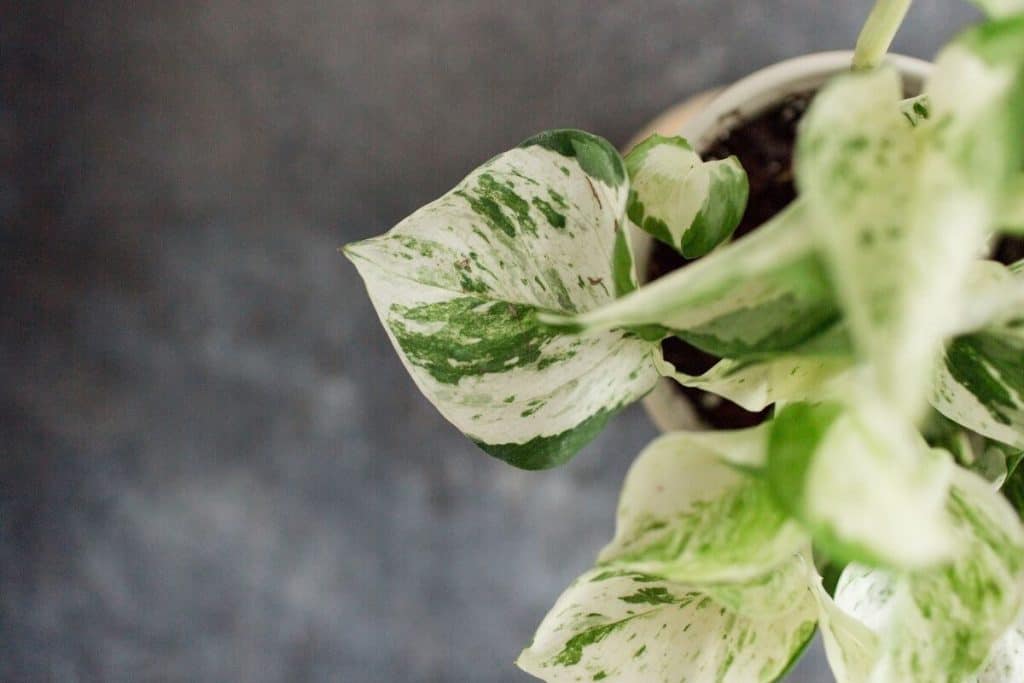
To put it simply, the Pearls and Jade Pothos? are mildly toxic to pets and humans. Typically, ingestion will result in mouth and stomach irritation and possible vomiting.
Therefore, we advise you to keep it as far away from your kids and pets as far away as possible.
Pearls and Jade Pothos Care Tips
Soil Requirements
Are you new in the business of growing house plants, particularly the Pearls and Jade Pothos, and you are scared of messing up the growing means?
Well, there's no need for that, as it adapts pretty well to any potting mix that it's grown in. As long as you provide it with enough nutrients, drain it well, and offer it good aeration.
Having said this, we wouldn't advise you to go for typical garden soil for its planting, as it is too dense. Instead, the best potting mix for the Pearls and Jade Pothos is the loosely compacted soil.
A potting mixture allows the free flow of nutrients, air, and water, resulting in a healthy root system.
Therefore, while it might look like an extra cost, you should be setting your sights on spending on a potting mix. More importantly, it should be formulated for succulents and Cacti like this one. Most times, you'll discover that the main ingredient in a cacti mix is peat moss.
This compound doesn't only help with absorbency but also releases moisture on an as-needed basis. You will likely find other ingredients in a Cacti-specific potting mixture, such as perlite or pumice and sand. Their function is primarily to improve the soil's drainage and aeration.
Light Requirements
When grown indoors, the Pearls and Jade Pothos thrive best in bright but indirect sunlight. Variegated plants can often lose their leaf pattern and revert to all-green plants if they fail to receive the sufficient amount of light they desire.
Therefore, it is advisable to move them to brighter conditions to restore the variegation. When you suddenly notice paler-looking leaves, it tells you that the plant is receiving excessive sunlight.
Related Post: Pothos N Joy Vs Pearls and Jade
Watering Requirements
In terms of watering, Pearls and Jade Pothos likes it most when its potting mixture stays slightly moist. In other words, it must not be highly wet or entirely dry.
But if we compare the two extremities, you're better off erring on the side of underwatering than overwatering.
Like other Pothos varieties, the Pearls and Jade Pothos is highly prone to root rot resulting from waterlogged soil. However, we are not advising you to avoid watering your plant for months because it will also be disastrous.
The fact is that your plant already loses water through transpiration. Therefore, whenever it escapes your mind to water it, its root system experiences even more stress because it exerts too much effort to draw moisture from the soil.
The result you get as a result of these activities is the yellowing of the leaves accompanied by a couple of brown, crispy spots. Also, the good thing about it is that an under-watered Pothos is easy to restore. Increase the frequency and amount of water to revive your plant.
Temperature & Humidity Requirements
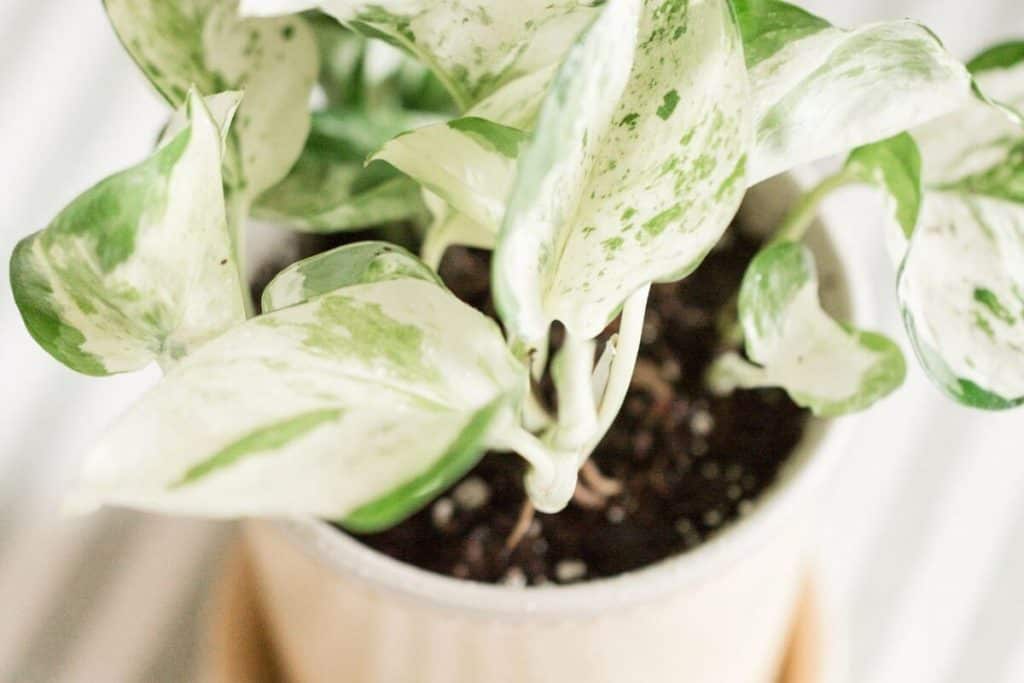
Temperature-wise, we advise you to keep the Pearls and Jade Pothos in temperatures that are consistently more than 50 degrees Fahrenheit, even though they mostly thrive in a standard room temperature that rangers between 65 degrees Fahrenheit and 75 degrees Fahrenheit.
Humidity-wise, much like other Pothos varieties, the Pearls and Jade Pothos prefers high humidity; therefore, you must ensure that the moisture in the air around the plant is increased.
You can confirm this by keeping it in a typically humid location of your home, like a kitchen or bathroom. However, the plant is a stubborn plant that can tolerate low humidified areas. Therefore, you don't need to bother about buying a space humidifier.
Related Post: Snow Queen Vs Marble Queen Pothos
Fertilizer Requirements
For those who have so much of a tight schedule that you will barely find time to feed your plant regularly, you will be relieved to discover that the Pearls and Jade Pothos variety is not a heavy feeder. In other words, you mean you won't necessarily have to fertilize it regularly.
It might interest you to know that fertilizer is not necessarily needed if you're using a potting mixture that is already chock-full of nutrients.
Therefore, we only recommend a little more fertilizer to enhance its growth. Again, we advise you to source a well-balanced or all-purpose fertilizer, then dilute it to half-strength before applying.
Also, you can feed your plant only during the growing season, which typically occurs between the spring and summer. During the winter season, you can cut back or stop feeding it ultimately.
And because it enters a semi-dormant phase, it grows at a much slower pace; hence, it doesn't require too much fertilizer.
We repeat, do not overfeed during these winter or cold months, as overfeeding them can accumulate salts and minerals, which can scorch your plant to death.
Potting Requirements
Like other slow growers, the Pearls and Jade Pothos doesn't need to be repotted too regularly. If possible, you can also wait for one or two years before transferring it to a new potting mix.
Even when you do, make sure you don't go more than a size larger. Don't forget that it's very prone to root rot. If you were to transfer it to an overly big container, the pot would likely retain excess water, encouraging rotting.
Pearls and Jade Pothos Propagation
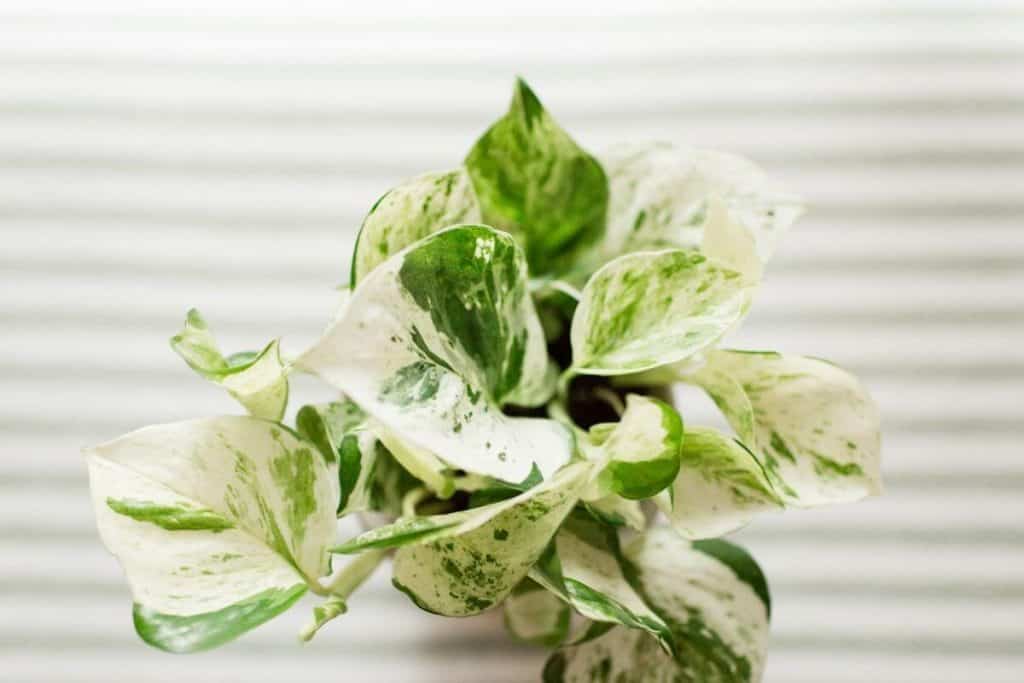
Propagation refers to the multiplication of plant collection from cuttings of the parent plant. There are several propagating techniques which include; propagation from cuttings and propagation from grafting and layering.
For the Pearls and Jade Pothos, the best and easiest propagation method is stem cutting. The following are the steps of propagation by stem cutting;
- Use a sterile, sharp cutting tool and cut out a healthy stem with at least three leaves at an angle about a half-inch or inch below the lowest leaf.
- Remove the lowest leaf from the stem cutting (you don't need to remove the other leaves).
- Put the rooting in a jar of water or a vase, but don’t allow the remaining leaves to touch the water
- Immediately the cutting in water has germinated new roots that are several inches long, likely over some weeks, transfer it to a pot with potting soil as soon as possible so it can start getting its nutrients.
- Place the pot in an area with bright indirect light.
Frequently Asked Questions
How much light do Pearls and Jade Pothos need?
To put it simply, the Pearls and Jade Pothos need bright, indirect light. That is not to say it can't tolerate medium and low light. However, the variegation will be more pronounced in brighter indirect light. Meanwhile, exposing them to the excess heat of direct sunlight will burn the foliage.
Related Post: Cebu Blue Pothos Vs Philodendron
How often should I water pearls and jade pothos?
It is straightforward. Though the Pearl and Jade Pothos require water to help their healthy growth, you shouldn't do it too often. In other words, there should be some time frame in between each watering, let's say, every 1 to 2 weeks at most. Meanwhile, it would be best to let the soil dry 1 to 2" inches down between watering.
Typically, like we earlier mentioned, you'll need to water the plant every 1 to 2 weeks. Because of its tropical origin, this Pothos variety thrives in higher humidity or the occasional misting. Therefore, endeavor to make adjustments to the watering routine when providing extra moisture.
Are Pearls and Jade Pothos slow-growing?
Generally, the Pearls and Jade Pothos produces smaller foliage than most other varieties. It's a slow-growing houseplant. However, we can say it is a bonus to its other enticing features if you decide to choose them, especially if you lack sufficient space in your home.
How fast do Pearls and Jade Pothos grow?
Generally, all Pothos varieties are invasive and proliferate. Though the Pearls and Jade Pothos variety is slow-growing, it is still invasive when it eventually matures. Typically, you can expect this plant to grow anywhere between six inches to six feet each year per vine.
Do Pothos like direct sunlight?
The answer is simple; NO. You will hardly see any plant that will do well in direct sunlight, including the Pothos varieties. When you expose them to direct sunlight, they will start developing paler-looking leaves, and when it becomes too much on them, it can burn the foliage.
However, you can temporarily bring them out during the cold winter periods to receive some early morning sunlight. However, you have to be watchful and be prepared to take them in after a short period to prevent them from absorbing excessive heat, which can be disastrous to their healthy growth.
Why are Pearls and Jade Pothos leaves turning yellow?
One of the significant reasons we see yellow leaves on Pothos is excessive sunshine. Like other Pothos varieties, the Pearls and Jade Pothos thrives in moderate amounts of light and can even tolerate low light conditions.
On the contrary, excessive light is an aberration as far as the Pothos is concerned, as it will not tolerate direct sunlight. Yellow pothos foliage can be an obvious sign that your plant is receiving an excessive amount of the sun.
Related Post: How to Care for Citronella Plant

